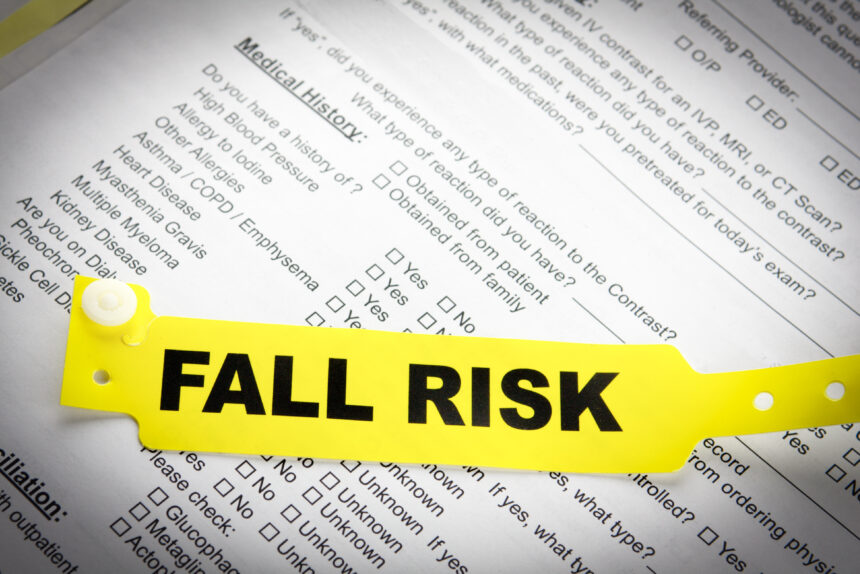Dementia Fall Risk Things To Know Before You Get This
Wiki Article
6 Easy Facts About Dementia Fall Risk Explained
Table of ContentsTop Guidelines Of Dementia Fall RiskDementia Fall Risk Things To Know Before You BuyMore About Dementia Fall RiskSome Known Factual Statements About Dementia Fall Risk
A fall danger analysis checks to see how likely it is that you will drop. It is mostly provided for older adults. The assessment generally includes: This includes a collection of inquiries about your general wellness and if you've had previous falls or issues with equilibrium, standing, and/or walking. These tools examine your strength, equilibrium, and stride (the means you walk).Treatments are suggestions that may reduce your risk of falling. STEADI consists of three steps: you for your risk of dropping for your risk variables that can be boosted to try to protect against drops (for example, equilibrium troubles, damaged vision) to decrease your threat of falling by using reliable techniques (for instance, giving education and sources), you may be asked numerous concerns consisting of: Have you dropped in the previous year? Are you stressed concerning dropping?
If it takes you 12 seconds or even more, it might mean you are at higher risk for an autumn. This examination checks strength and balance.
The placements will certainly get tougher as you go. Stand with your feet side-by-side. Move one foot midway forward, so the instep is touching the large toe of your various other foot. Relocate one foot fully before the other, so the toes are touching the heel of your other foot.
The Basic Principles Of Dementia Fall Risk
The majority of drops happen as an outcome of numerous adding elements; therefore, handling the danger of dropping begins with recognizing the factors that add to fall risk - Dementia Fall Risk. A few of the most relevant threat elements include: History of previous fallsChronic medical conditionsAcute illnessImpaired gait and balance, lower extremity weaknessCognitive impairmentChanges in visionCertain high-risk drugs and polypharmacyEnvironmental variables can additionally raise the risk for falls, including: Inadequate lightingUneven or damaged flooringWet or unsafe floorsMissing or damaged hand rails and grab barsDamaged or incorrectly fitted tools, such as beds, wheelchairs, or walkersImproper use assistive devicesInadequate guidance of individuals staying in the NF, consisting of those that show hostile behaviorsA effective loss danger monitoring program requires a comprehensive scientific analysis, with input from all members of the interdisciplinary team

The treatment strategy need to likewise consist of treatments that are system-based, such as those that promote a risk-free environment (proper lighting, hand rails, grab bars, and so on). The performance of the interventions need to be evaluated regularly, and the treatment strategy revised as necessary to show modifications in the autumn danger evaluation. Carrying out an autumn danger administration system utilizing evidence-based finest technique can decrease the occurrence of falls in the NF, while restricting the capacity for fall-related injuries.
The Best Guide To Dementia Fall Risk
The AGS/BGS standard recommends evaluating all adults matured 65 years and older for autumn danger every year. Recommended Site This screening contains asking individuals whether they have dropped 2 or even more times in the previous year or sought clinical focus for a fall, or, if they have actually not fallen, whether they feel unsteady when navigate to this website strolling.Individuals who have actually fallen as soon as without injury ought to have their balance and gait reviewed; those with stride or equilibrium abnormalities must obtain extra assessment. A history of 1 autumn without injury and without stride or balance problems does not necessitate further analysis past continued yearly autumn danger testing. Dementia Fall Risk. An autumn danger evaluation is called for as part of the Welcome to Medicare examination

Dementia Fall Risk - An Overview
Documenting a drops history is among the quality indications for autumn prevention and monitoring. An important component of threat analysis is a medication testimonial. Several classes of drugs increase loss danger (Table 2). Psychoactive medications particularly are independent forecasters of falls. These drugs have a tendency to be sedating, modify the sensorium, and hinder balance and stride.Postural hypotension can usually be eased by lowering the dosage of blood pressurelowering medications and/or quiting medications that have orthostatic hypotension as a side effect. Use above-the-knee support hose pipe and sleeping with the head of the bed elevated may likewise decrease postural reductions in high blood pressure. The recommended components of a fall-focused health examination are displayed in Box 1.

A Yank time higher than or equal to 12 secs recommends high autumn risk. Being not able to stand up from a chair of knee elevation without using one's arms shows raised autumn danger.
Report this wiki page